|
Good in a Natural Garden
Early-flowering umbellifers tend to have white, or green, or cool-pink flowers and because each individual flower is very tiny they attract hoverflies and flies rather than bees. Hoverflies are mostly advantageous to gardeners because an adult female will lay a single oval egg near aphid colonies. Their larvae, which often resemble translucent maggots, will munch away at the aphids - helping to rid the garden of these annoying pests. Flies are also useful in the garden too: they hone in on green flowers which are largely ignored by other insects, and make excellent pollinators. Most umbellifers are tap-rooted, so tolerate drought once the root gets into the soil - and like all tap-rooted plants, they prefer poorer soils.
Early Season Froth
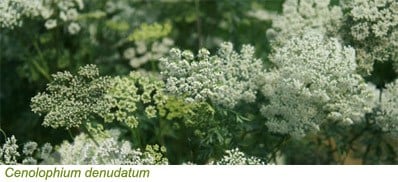
The earliest of all is our common cow parsley or Queen Anne’s lace, Anthriscus sylvestris, so often seen straddling roadside verges. The refined garden form, ‘Ravenswing’ has dark ferny leaves underpinning tiny white sprays of flower. It enjoys a little shade, not full sun, and the dark stems reach up to 4’ in good soil (120cm). It will self seed unless cut down, so generally it’s best grown in a wilder woodland setting as it can have a habit of embedding itself into nearby plants. When it sets seed it will do a 50/50 split. Half the seedlings will come true and show their dark-purple leaves early on. The other half will revert to a wilding and display dark-green lacy foliage. Purists should weed the all-green ones out, or deadhead before seed is set. A more lacy white umbellifer and also a true perennial is the Baltic cow parsley (Cenolophium denudatum). It was dubbed the Chelsea Cow Parsley because it has been used by so many top designers, most famously Tom Stuart-Smith.
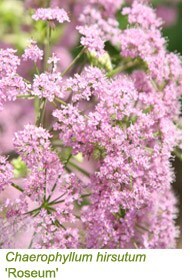 Two other umbellifers flower at the same time, and both have cool-pink frothy flowers that could pick up the colour of pink Daphnes or pink montana clematis. Chaerophyllum hirsutum ‘Roseum’ is a pink form of hairy chervil with soft apple-scented foliage. Most umbellifers are edible, although some (like Hemlock) are notoriously deadly. Many are grown for their edible roots or aromatic leaves including carrots, parsnips, sweet Florence fennel, dill, caraway and sweet cicely. Chaerophyllum is easy in a variety of soils and it will thrive in shade or sun, but Pimpinella major ‘Rosea‘ will need a damp patch as it does very poorly in dry positions. It’s happiest in shade and will flower for weeks, looking especially fine close to dark, Cimicifuga foliage such as shade-loving Actaea simplex Atropurpurea Group. This statuesque bugbane has tiered, dark ferny foliage, but doesn’t produce its bottlebrush flowers until late-August. Two other umbellifers flower at the same time, and both have cool-pink frothy flowers that could pick up the colour of pink Daphnes or pink montana clematis. Chaerophyllum hirsutum ‘Roseum’ is a pink form of hairy chervil with soft apple-scented foliage. Most umbellifers are edible, although some (like Hemlock) are notoriously deadly. Many are grown for their edible roots or aromatic leaves including carrots, parsnips, sweet Florence fennel, dill, caraway and sweet cicely. Chaerophyllum is easy in a variety of soils and it will thrive in shade or sun, but Pimpinella major ‘Rosea‘ will need a damp patch as it does very poorly in dry positions. It’s happiest in shade and will flower for weeks, looking especially fine close to dark, Cimicifuga foliage such as shade-loving Actaea simplex Atropurpurea Group. This statuesque bugbane has tiered, dark ferny foliage, but doesn’t produce its bottlebrush flowers until late-August.
Statuesque and Architectural
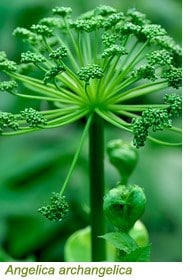 Angelica archangelica, a tall branching sculptural plant topped with rounded umbels of green flower, is happy in a dank corner. It’s supposed to be in flower for first feast day of Saint Michael the Archangel on May 8th, and it often is following a warm spring. It will reach man-height or taller and takes up room, so it’s not for the small plot - and it’s an irreverent self-seeder despite its holy connections. Don’t leave it to smother your garden, but do collect some of the large seeds, because this biennial dies after flowering. Angelica archangelica, a tall branching sculptural plant topped with rounded umbels of green flower, is happy in a dank corner. It’s supposed to be in flower for first feast day of Saint Michael the Archangel on May 8th, and it often is following a warm spring. It will reach man-height or taller and takes up room, so it’s not for the small plot - and it’s an irreverent self-seeder despite its holy connections. Don’t leave it to smother your garden, but do collect some of the large seeds, because this biennial dies after flowering.
A. archangelica was introduced into Europe in the 16th century and grown for its medicinal and magical properties. It was considered an aphrodisiac, an antidote to poisons, a safeguard against the plague and a protection against witches. The candied stems and roots are still used in various culinary ways - including giving the characteristic flavour to Benedictine. Its Korean cousin, Angelica gigas, bears dark sultry flowers. However it does need warmth and doesn’t flourish in cold gardens. In its native land it is grown by the field-full - as an aphrodisiac.
Positively Aromatic
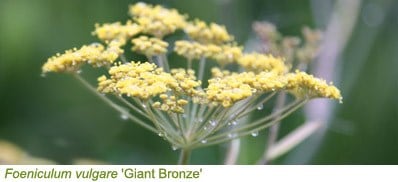
Many umbellifers have aromatic foliage, a sign that they’re sun lovers. The feathery foliage of fennel smells of aniseed on hot days. Common fennel, Foeniculum vulgare, comes in a green-leaved form, but it’s the bronze-leaved beauty (Foeniculum vulgare 'Giant Bronze') that wins all the plaudits. Both are long lived, very hardy and at their best for foliage in May. They can both be raised from seed.
Find a Hot Spot

Common fennel shouldn’t be confused with the enormous Giant fennel (Ferula communis) which produces a rosette of curly dark-green foliage early in the year before sending up an enormous spike containing many euphorbia-yellow flowers, usually following a warm spell. This Mediterranean plant, although very hardy, loves an arid hotspot. If happy it will top 10ft (3m) and will need staking when it flowers to stop it tumbling over. It looks tremendous behind tall, fiery Crocosmias (such as ‘Lucifer’) and one of its parents C. masoniorum.
Two other umbellifers also like the heat. Seseli gummifera, which oozes a sticky fluid when the stems are damaged, is a biennial with finely divided glaucous foliage that curls over the ground like a puff of smoke. The flowers are white and form globular spheres giving this plant the name of Moon carrot. It’s native to the Crimea, but will only do well in warm positions.
The lax perennial Mathiasella bupleuroides ‘Green Dream’ (made popular by Crocus at Chelsea in 2007) also needs quite a bit of warmth in order to survive winter: the species was collected in sun-baked Mexico in 1954 by an American botanist called Mildred Mathias.
Annual Crowd Pleasers
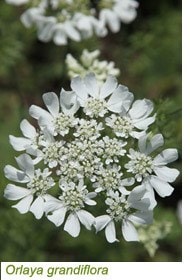 Umbellifers germinate easily in warm conditions so they are generally sown once the temperatures begin to rise in spring to 50F/12C. However autumn sowing, accomplished in September, gives larger, better established plants. The seeds are pricked out in early spring under glass, with no heat in the same way that sweet peas are. Three good annuals are the glaucous-leaved white lace flower, Orlaya grandiflora, which actually seems to enjoy some shade. Of the two forms of Ammi, the most well known is Ammi majus, often called the Bishop’s Flower. This tall billowing white umbellifer has great charm and it makes a good, frothy cut flower used with sweet peas and other annuals. Ammi visnaga is shorter and more-erect and rather like our wild carrot with heads that curl up as they green and age. When sowing umbellifers with large seeds place them into the compost vertically, not flat, as they are less likely to rot. Umbellifers germinate easily in warm conditions so they are generally sown once the temperatures begin to rise in spring to 50F/12C. However autumn sowing, accomplished in September, gives larger, better established plants. The seeds are pricked out in early spring under glass, with no heat in the same way that sweet peas are. Three good annuals are the glaucous-leaved white lace flower, Orlaya grandiflora, which actually seems to enjoy some shade. Of the two forms of Ammi, the most well known is Ammi majus, often called the Bishop’s Flower. This tall billowing white umbellifer has great charm and it makes a good, frothy cut flower used with sweet peas and other annuals. Ammi visnaga is shorter and more-erect and rather like our wild carrot with heads that curl up as they green and age. When sowing umbellifers with large seeds place them into the compost vertically, not flat, as they are less likely to rot.
Umbellifers in Disguise
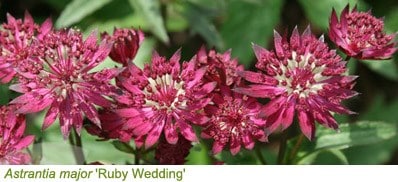
Not all umbellifers form an open umbel. Astrantias and Eryngiums are also umbels, with tighter flowers.
|
Five tips for July
 |
Cast Some Light
 I hate to say it, but the nights are drawing in already. Extend your warm evenings outside by lighting candles. The coloured garden stake tea light holders come in a set of 4 and are ideal for outdoor use. They also come in some great colours. Or invest in small Mia tealight holders made from recycled glass. Solar lights and larger lanterns can also extend your outdoor evenings. I hate to say it, but the nights are drawing in already. Extend your warm evenings outside by lighting candles. The coloured garden stake tea light holders come in a set of 4 and are ideal for outdoor use. They also come in some great colours. Or invest in small Mia tealight holders made from recycled glass. Solar lights and larger lanterns can also extend your outdoor evenings.
|
 |
Gap Up
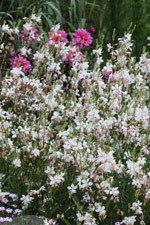 Gap up, particularly around oriental poppies, using plants that will go on until early winter. Penstemons, Gaura lindheimeri and the lovely pale-pink, frost-hardy sage Salvia 'Peter Vidgeon' will shine on if planted now. Gap up, particularly around oriental poppies, using plants that will go on until early winter. Penstemons, Gaura lindheimeri and the lovely pale-pink, frost-hardy sage Salvia 'Peter Vidgeon' will shine on if planted now.
|
 |
Dahlias for Summer Warmth

As we enter the daisy season of asters and golden daisies add some spark by planting classic dahlia varieties like the butterscotch waterlily 'David Howard' and the dark-leaved peony-flowered bright-red 'Bishop of Llandaff'.
|
 |
Agapanthus - Evening Stars
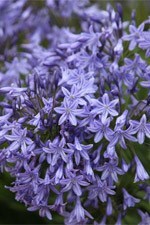
Blue is a colour which glows in evening light, but it's in short supply. One of the best ways of injecting it into your garden is by planting up a sturdy potful of Agapanthus 'Castle of Mey'. Overwinter in the lea of the house by laying the pot on its side, or place it in a greenhouse , but always ease off the watering in September.
|
 |
Plant a Butterfly Magnet
 Every garden should contain a honey-scented Buddleja to attract the butterflies. The medium-sized 'Lochinch' has small, slender spikes of orange-eyed purple flowers. If space is tighter containerise the compact 'Buzz Magenta'. Or opt for the taller grape-purple 'Black Knight'. Prune them back in early April. Every garden should contain a honey-scented Buddleja to attract the butterflies. The medium-sized 'Lochinch' has small, slender spikes of orange-eyed purple flowers. If space is tighter containerise the compact 'Buzz Magenta'. Or opt for the taller grape-purple 'Black Knight'. Prune them back in early April.
|
|



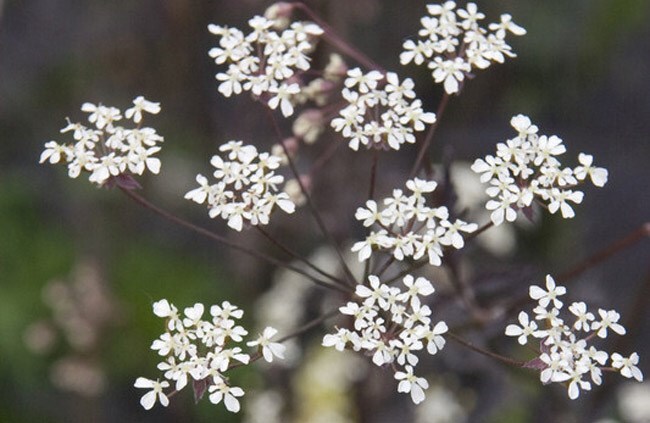


 Angelica archangelica
Angelica archangelica








